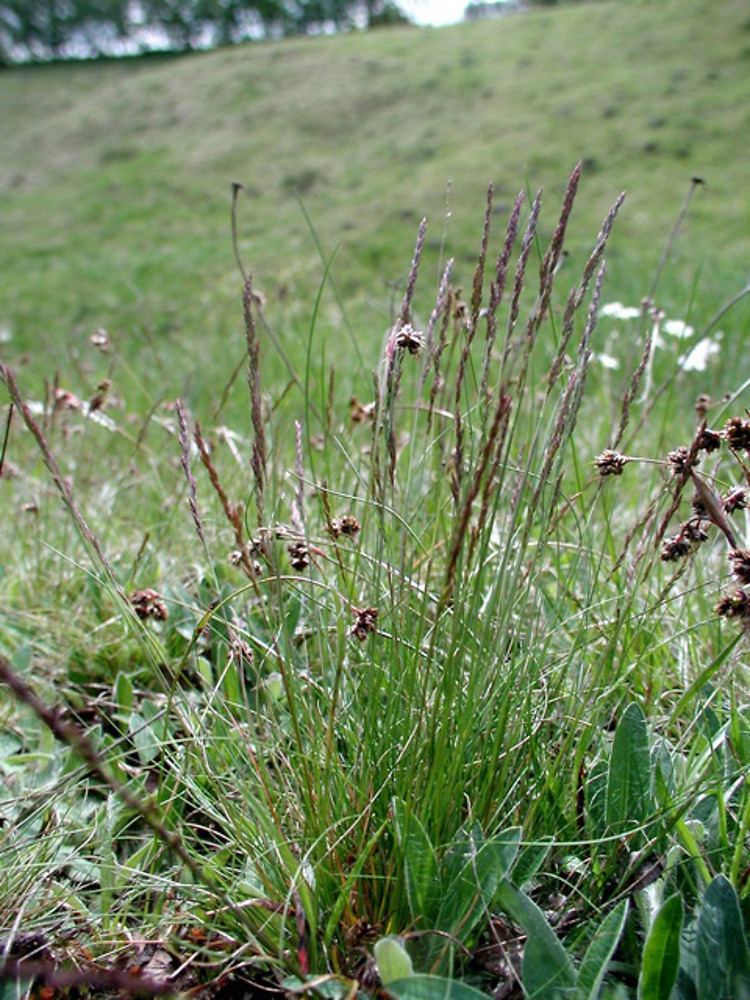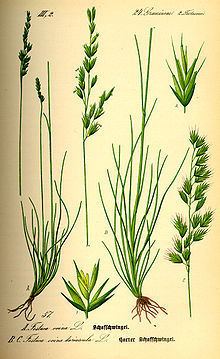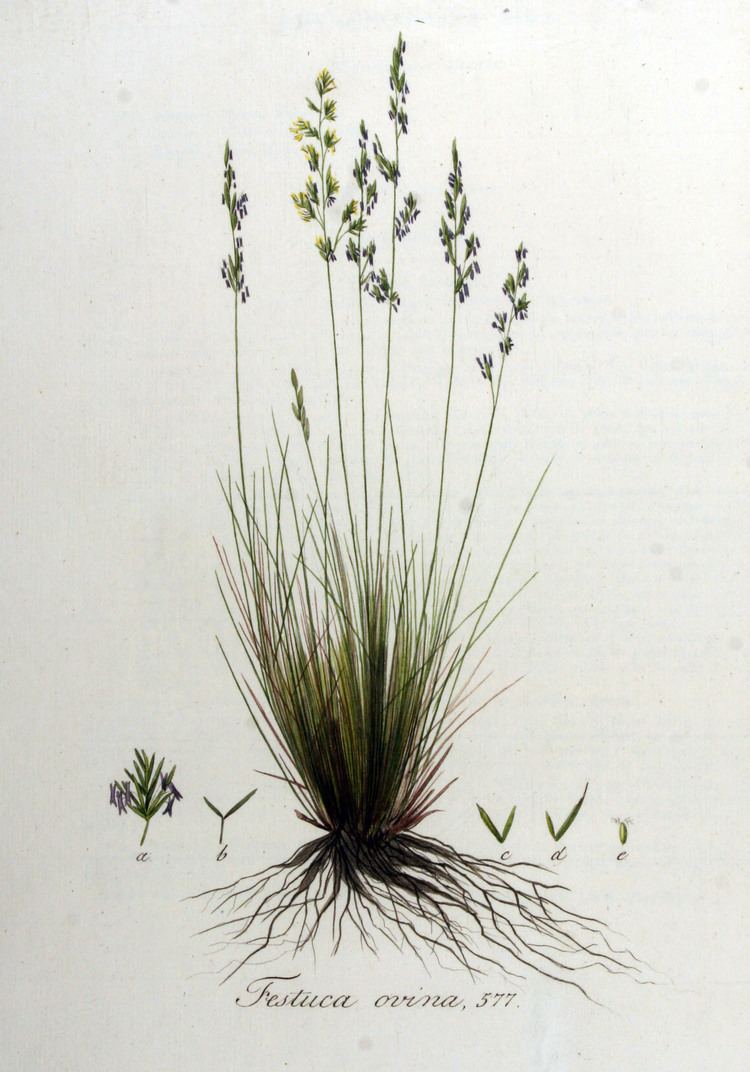Rank Species | Genus Festuca Higher classification Fescues | |
 | ||
Similar Fescues, Festuca rubra, Grasses, Agrostis capillaris, Kentucky bluegrass | ||
Sheep's fescue or sheep fescue (Festuca ovina) is a species of grass. It is sometimes also known by the common name Hard Fescue; however, that name may also be used to refer to Festuca longifolia.
Contents

General Description

It is a perennial plant sometimes found in acidic ground, and in mountain pasture, throughout Europe (with the exception of some Mediterranean areas) and eastwards across much of Asia; it has also been introduced to North America.

It is classified under the British NVC community CG2, i.e. Festuca ovina – Avenula pratensis grassland, one of the calcicolous grassland communities.

Sheep's fescue is a densely tufted perennial grass. Its greyish-green leaves are short and bristle-like. The panicles are both slightly feathery and a bit one-sided. It flowers from May until June, and is wind-pollinated. It has no rhizomes.
See also List of Lepidoptera that feed on grasses
This is one of the food plants for the caterpillars of several butterflies and moths, including the Gatekeeper and the Meadow Brown, the Small Heath, and the grass moth Agriphila inquinatella.

Sheep's fescue is a drought-resistant grass, commonly found on poor, well-drained mineral soil. It is sometimes used as a drought-tolerant lawn grass.

The great ability to adapt to poor soils is due to mycorrhizal fungi, which increase the absorption of water and nutrients and also are potential determinants of plant community structure. The symbiosis with fungi increases mineral, nitrogen and phosphate absorption, thanks to fungal hyphae that expand deeply in the soil and cover plant roots, increasing the exchange surface. The symbiosis also makes every plant interconnected with the surrounding plants, making possible the exchange of nutrients between plants far from each other.
More colourful garden varieties with blue-grey foliage are available.
Wildlife Value
The Gatekeeper Butterfly feeds on it.
